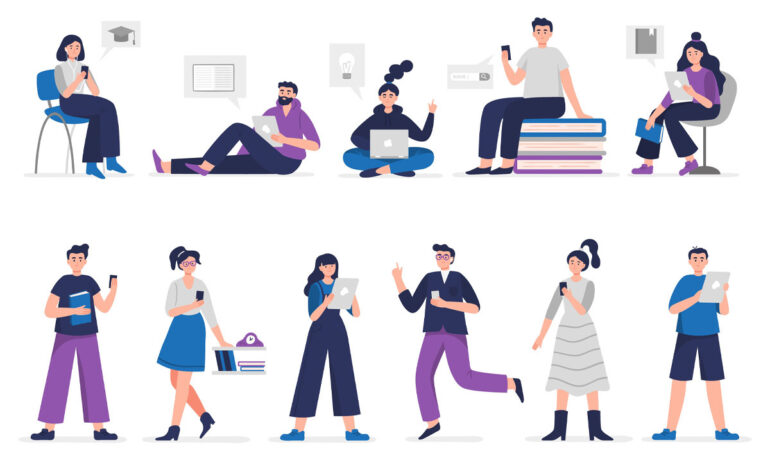A UCF readability researcher worked with an Adobe team on a machine learning model to provide personalized font recommendations that improve the accessibility of digital information and enhance individual reading experiences.
The team was comprised of Adobe machine learning engineers and researchers who collaborated with vision scientists, typographers, data scientists, and a UCF readability researcher to study Adobe’s machine learning model known as FontMART.
The results were recently published in ACM Designing Interactive Systems 2022.
Adobe is part of The Readability Consortium that leads UCF’s digital readability research using individuated typography to enhance digital readability for readers of all ages and abilities. Adobe’s FontMART research was done in collaboration with UCF’s Virtual Readability Lab.
“The future of readability is a device watching humans read and using their performance to tailor the format so that they read at their best,” says Ben Sawyer, the director of the Readability Consortium and UCF’s Virtual Readability Lab. “We look forward to the day when you can pick up a device, read and receive information in a way that uniquely suits your needs.”
Sawyer and Zoya Bylinskii, an Adobe research scientist, were involved in the conception of the research and provided guidance throughout the study. Tianyuan Cai, an Acrobat.com machine learning engineer, led the FontMART study.
The study used the Font Preference Test featured on UCF’s Virtual Readability Lab’s website to provide baselines for evaluating FontMART’s recommendations.
The consideration of font preference is important since people’s preferred fonts often differ from the font that can best improve their reading experience and performance. The discrepancy between a reader’s preferred font and fastest font has been demonstrated in previous readability research.
Study results indicated that the FontMART model can recommend fonts that improve reading speed by matching reader characteristics with specific font characteristics.
How the model works
The FontMART model learns to associate fonts with specific reader characteristics. FontMART was trained with a remote readability study of 252 crowd workers and their self-reported demographic information. Interviews with typographers influenced the selection of the eight fonts used in the study. The final font selection included fonts from both the serif (i.e., Georgia, Merriweather, Times, and Source Serif Pro) and Sans Serif (i.e., Arial, Open Sans, Poppins, and Roboto) families.
The effect of a font varies by readers, researchers found.
FontMART can predict the fonts that work well for specific readers by understanding the relationship between font characteristics and reader characteristics like font familiarity, self-reported reading speed and age, according to the FontMART study. Among the characteristics considered, age plays the largest role when the model determines which font is recommended for readers.
For instance, font characteristics like heavier weight benefit the reading experience of older adults because thicker font strokes are easier to read for those with weaker and variable eyesight.
More research is needed and may include broader age distribution of participants to be more representative of the general population, evaluating the model’s effectiveness for other reading contexts like long-form or glanceable, and expanding the languages and associated font characteristics to better accommodate reader diversity.
Continued collaborations and research will help expand the characteristics explored to improve the FontMART model and enhance individual reading experiences.
UCF’s Readability Consortium and Virtual Readability Lab address how personalization can improve reading efficiency and speed. Sawyer also leads LabX, an applied neuroscience group focused on human performance, and he is an associate professor in industrial engineering and management systems. Sawyer received a doctorate in human factors psychology and a master’s degree in industrial engineering from UCF. He completed his postdoctoral studies at MIT.
More information:
Tianyuan Cai et al, Personalized Font Recommendations: Combining ML and Typographic Guidelines to Optimize Readability, Designing Interactive Systems Conference (2022). DOI: 10.1145/3532106.3533457
Provided by
University of Central Florida
Citation:
AI model recommends personalized fonts to improve digital reading, accessibility (2022, August 12)



